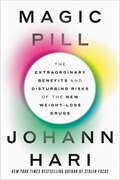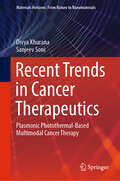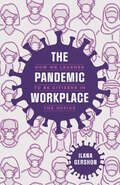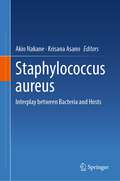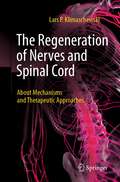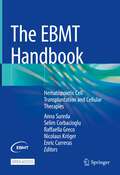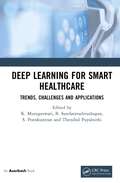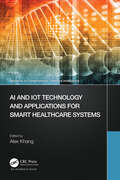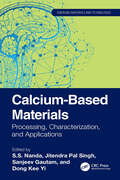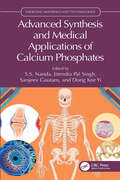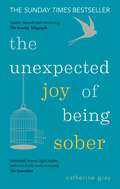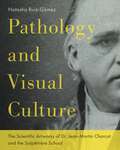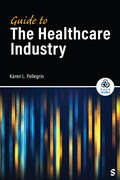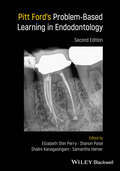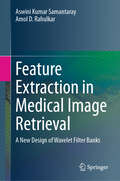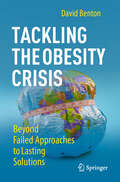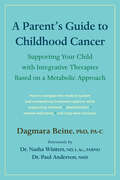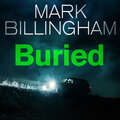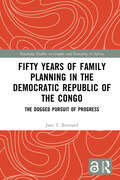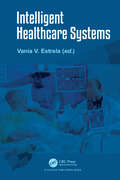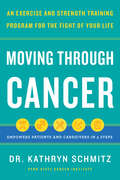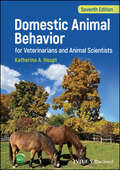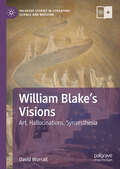- Table View
- List View
Magic Pill: The Extraordinary Benefits and Disturbing Risks of the New Weight-Loss Drugs
by Johann HariThe bestselling author of Lost Connections and Stolen Focus offers a revelatory look at the new drugs transforming weight loss as we know it—from his personal experience on Ozempic to our ability to heal our society&’s dysfunctional relationship with food, weight, and our bodies.In January 2023, Johann Hari started to inject himself once a week with Ozempic, one of the new drugs that produces significant weight loss. He wasn&’t alone—some predictions suggest that in a few years, a quarter of the U.S. population will be taking these drugs. While around 80 percent of diets fail, someone taking one of the new drugs will lose up to a quarter of their body weight in six months. To the drugs&’ defenders, here is a moment of liberation from a condition that massively increases your chances of diabetes, cancer, and an early death. Still, Hari was wildly conflicted. Can these drugs really be as good as they sound? Are they a magic solution—or a magic trick? Finding the answer to this high-stakes question led him on a journey from Iceland to Minneapolis to Tokyo, and to interview the leading experts in the world on these questions. He found that along with the drug&’s massive benefits come twelve significant potential risks. He also found that these drugs radically challenge what we think we know about shame, willpower, and healing. What do they reveal about the nature of obesity itself? What psychological issues begin to emerge when our eating patterns are suddenly disrupted? Are the drugs a liberation or a further symptom of our deeply dysfunctional relationship with food? These drugs are about to change our world, for better and for worse. Everybody needs to understand how they work—scientifically, emotionally, and culturally. Magic Pill is an essential guide to the revolution that has already begun, and which one leading expert argues will be as transformative as the invention of the smartphone.
Recent Trends in Cancer Therapeutics: Plasmonic Photothermal-Based Multimodal Cancer Therapy (Materials Horizons: From Nature to Nanomaterials)
by Divya Khurana Sanjeev SoniThis book describes the plasmonic photothermal-assisted multimodal cancer therapeutics in the area of cancer nanotechnology or cancer nanomedicine. This book covers the fundamentals of plasmonic photothermal cancer therapy as well as plasmonic photothermal mediated multimodal cancer therapy. The various steps involved in developing such therapeutic modality, viz. (a) the selection of suitable nanoparticles, (b) synthesis of multifunctional nanocomposite, (c) optimization of the photosensitizer and chemotherapeutic drug loadings, (d) characterization of the synthesized nanocomposite, and (e) therapeutic evaluations through novel tumor-tissue mimicking phantoms and the cancer cell lines are discussed in detail. Apart from the detailed description of therapeutic outcome, this book provides a step-by-step approach to develop a multifunctional nanocomposite for such therapeutics. Overall, this book provides simplified and in-depth information about cancer nanobiotechnology to the researchers and graduate students in subject areas of nanotechnology, biotechnology and pharmaceutics to develop and contribute to such multimodal cancer therapeutics.
The Pandemic Workplace: How We Learned to Be Citizens in the Office
by Ilana GershonA provocative book arguing that the workplace is where we learn to live democratically. In The Pandemic Workplace, anthropologist Ilana Gershon turns her attention to the US workplace and how it changed—and changed us—during the pandemic. She argues that the unprecedented organizational challenges of the pandemic forced us to radically reexamine our attitudes about work and to think more deeply about how values clash in the workplace. These changes also led us as workers to engage more with the contracts that bind us as we rethought when and how we allow others to tell us what to do. Based on over two hundred interviews, Gershon’s book reveals how negotiating these tensions during the pandemic made the workplace into a laboratory for democratic living—the key place where Americans are learning how to develop effective political strategies and think about the common good. Exploring the explicit and unspoken ways we are governed (and govern others) at work, this accessible book shows how the workplace teaches us to be democratic citizens.
Staphylococcus aureus: Interplay between Bacteria and Hosts
by Akio Nakane Krisana AsanoStaphylococcus aureus is an opportunistic human pathogen that colonizes the mucosal surfaces. It is the causative agent of various serious acute and chronic infections. Recent prevalence of infectious diseases caused and expanded by hospital-acquired methicillin-resistant S. aureus (HA-MRSA), community-acquired methicillin-resistant S. aureus (CA-MRSA) and livestock-acquired methicillin-resistant S. aureus (LA-MRSA). MRSA infections must be more serious problem in near future. It is presumed that offense and defense responses are continuously executed between S. aureus and host to establish and maintain commensalism for S. aureus. Therefore, it is essential to elucidate interplay between S. aureus and hosts to prevent staphylococcal infectious diseases. This book is comprised of content that focuses on this aspect.
The Regeneration of Nerves and Spinal Cord: About Mechanisms and Therapeutic Approaches
by Lars P. KlimaschewskiThis non-fiction book provides information about the latest findings on research and therapy of nerve regeneration with catchy drawings and in understandable words. Why do nerves in the extremities regenerate, but the axons in the spinal cord do not? Can transplanted stem cells or biopolymers restore regeneration? Are bioprostheses able to functionally replace amputated arms or legs? Neuroscientist Lars Klimaschewski answers these questions and reports on exciting findings from anatomy, cell and molecular biology and neurotechnology. Find out, among other things, how a brain-computer interface processes signals from the brain in order to control the arm or leg muscles again via electrodes after a paraplegia.The translation was done with the help of artificial intelligence. A subsequent human revision was done primarily in terms of content.
The EBMT Handbook: Hematopoietic Cell Transplantation and Cellular Therapies
by Anna Sureda Selim Corbacioglu Raffaella Greco Nicolaus Kröger Enric CarrerasThis Open Access new edition of the EBMT handbook with its new format, addresses the latest developments and innovations in hematopoietic cell transplantation and cellular therapy. Consisting of 94 chapters, it has been written by 210 leading experts in the field. Discussing all types of hematopoietic cell transplantation, including selection of stem cell sources, it also covers the indications for transplantation, the management of early and late complications as well as the new and rapidly evolving field of cellular therapies and new infections (COVID-19). This book provides an unparalleled description of current practices to enhance readers’ knowledge and practice skills.
Deep Learning for Smart Healthcare: Trends, Challenges and Applications
by K. Murugeswari B. Sundaravadivazhagan S. Poonkuntran Thendral PuyalnithiDeep learning can provide more accurate results compared to machine learning. It uses layered algorithmic architecture to analyze data. It produces more accurate results since learning from previous results enhances its ability. The multi-layered nature of deep learning systems has the potential to classify subtle abnormalities in medical images, clustering patients with similar characteristics into risk-based cohorts, or highlighting relationships between symptoms and outcomes within vast quantities of unstructured data.Exploring this potential, Deep Learning for Smart Healthcare: Trends, Challenges and Applications is a reference work for researchers and academicians who are seeking new ways to apply deep learning algorithms in healthcare, including medical imaging and healthcare data analytics. It covers how deep learning can analyze a patient’s medical history efficiently to aid in recommending drugs and dosages. It discusses how deep learning can be applied to CT scans, MRI scans and ECGs to diagnose diseases. Other deep learning applications explored are extending the scope of patient record management, pain assessment, new drug design and managing the clinical trial process.Bringing together a wide range of research domains, this book can help to develop breakthrough applications for improving healthcare management and patient outcomes.
AI and IoT Technology and Applications for Smart Healthcare Systems (Advances in Computational Collective Intelligence)
by Alex KhangIn recent years, the application of Artificial Intelligence (AI) and Internet of Things (IoT) technologies in smart healthcare has been increasing. We are approaching a world where connected smart devices tell people when they need to visit a doctor because these devices will be able to detect health problems and discover symptoms of illness that may need medical care. AI-collaborative IoT technologies can help medical professionals with decision-making. These technologies can also help develop a sustainable and smart healthcare system.AI and IoT Technology and Applications for Smart Healthcare Systems helps readers understand complex scientific topics in a simple and accessible way. It introduces the world of AI-collaborative IoT physics, explaining how this technology behaves at the smallest level and how this can revolutionize healthcare. The book shows how IoT technology and AI can work together to make computers more powerful and capable of solving complex problems in the healthcare sector. Exploring the effect of AI-collaborative technology on IoT technologies, the book discusses how IoT can benefit from AI algorithms to enable machines to learn, make decisions, and process information more efficiently. Because smart machines create more perceptive devices and systems, the application of this technology raises important ethical questions about privacy, security, and the responsible development of healthcare IoT technology, which this book covers. The book also provides insight into the potential applications of these technologies not only in the healthcare industry but also in related fields, such as smart transportation, smart manufacturing, and smart cities.
Calcium-Based Materials: Processing, Characterization, and Applications (Emerging Materials and Technologies)
by S. S. Nanda Jitendra Pal Singh Sanjeev Gautam Dong Kee YiCalcium-based natural minerals are important for a wide range of applications. Though these materials are available in nature, researchers are working toward developing them in the laboratory.Calcium-Based Materials: Processing, Characterization, and Applications introduces the possibility of designing these materials for particular applications. Introduces a variety of calcium-based materials and discusses synthesis, growth, and stability Provides in-depth coverage of calcium carbonate Discusses applications of calcium-based minerals in different fields Includes details on synchrotron X-ray tools for case minerals This comprehensive text is aimed at researchers in materials science, engineering, and bioengineering.
Advanced Synthesis and Medical Applications of Calcium Phosphates (Emerging Materials and Technologies)
by S. S. Nanda Jitendra Pal Singh Sanjeev Gautam Dong Kee YiCalcium phosphate materials are used in many medical and dental applications. Advanced Synthesis and Medical Applications of Calcium Phosphates covers the structure, chemistry, synthesis, and properties of both natural and synthetic calcium-based biomaterials and details a variety of medical applications. Depicts the latest advances in using calcium phosphates in bone regeneration and tissue engineering Includes the latest generation of regenerative biomaterials with an integrated perspective combining both research and clinical issues Provides an understanding of the clinical targets and requirements for regenerative medicine Detailing fundamentals through applications, this book helps biomaterials researchers to better understand the clinical targets and requirements for use of these materials for optimal synthesis and development.
The Unexpected Joy of Being Sober: THE SUNDAY TIMES BESTSELLER (The Unexpected Joy Of #1)
by Catherine GrayGoing sober will make you happier, healthier, wealthier, slimmer and sexier. Despite all of these upsides, it's easier said than done. This inspirational, aspirational and highly relatable narrative champions the benefits of sobriety; combining the author's personal experience, factual reportage, contributions from experts and self-help advice.
Pathology and Visual Culture: The Scientific Artworks of Dr. Jean-Martin Charcot and the Salpêtrière School
by Natasha Ruiz-GómezIn this book, Natasha Ruiz-Gómez delves into an extraordinary collection of pathological drawings, photographs, sculptures, and casts created by neurologists at Paris’s Hôpital de la Salpêtrière in the nineteenth century. Led by Dr. Jean-Martin Charcot (1825–1893) and known collectively as the Salpêtrière School, these savants-artistes produced works that demonstrated an engagement with contemporary artistic discourses and the history of art, even as the artists/clinicians professed their dedication to absolute objectivity.During his lifetime, Charcot became internationally famous for his studies of hysteria and hypnosis, establishing himself as a pioneer in modern neurology. However, this book brings to light the often-overlooked contributions of other clinicians, such as Dr. Paul Richer, who created “scientific artworks” that merged scientific objectivity with artistic intervention. Challenging conventional interpretations of visual media in medicine, Ruiz-Gómez analyzes how these images and objects documented symptoms and neuropathology while defying disciplinary categorization.Grounded in extensive archival research, Pathology and Visual Culture targets an international audience of historians and students of art, visual culture, medicine, and the medical humanities. It will also captivate neurologists and anyone interested in fin-de-siècle French history and culture.
Guide to the Healthcare Industry (SAGE Works)
by Karen PellegrinHealthcare′s advancements are undeniable, but delivering good value remains a challenge. Costs rise while quality improvements lag, leading some to call for removing business from healthcare entirely. This book offers a different perspective, inviting students and professionals to consider the potential of evidence-based business practices to improve healthcare and reduce costs. This engaging guide explores the unique complexities of the healthcare industry, highlighting why it′s ripe for disruption through innovative business solutions. By delving into how traditional models might not fit healthcare perfectly, the book paves the way for understanding how better business practices can unlock the potential for higher quality care at a lower cost.
Guide to the Healthcare Industry (SAGE Works)
by Karen PellegrinHealthcare′s advancements are undeniable, but delivering good value remains a challenge. Costs rise while quality improvements lag, leading some to call for removing business from healthcare entirely. This book offers a different perspective, inviting students and professionals to consider the potential of evidence-based business practices to improve healthcare and reduce costs. This engaging guide explores the unique complexities of the healthcare industry, highlighting why it′s ripe for disruption through innovative business solutions. By delving into how traditional models might not fit healthcare perfectly, the book paves the way for understanding how better business practices can unlock the potential for higher quality care at a lower cost.
Pitt Ford's Problem-Based Learning in Endodontology
by Elizabeth Shin Perry Shanon Patel Shalini Kanagasingam Samantha HamerPitt Ford’s Problem-Based Learning in Endodontology Pitt Ford’s Problem-Based Learning in Endodontology, 2nd Edition, is an essential reference for Endodontology, enriched with the latest research and clinical evidence. Employing a problem-based approach, it consolidates readers’ knowledge and diagnostic skills. Prepared by an international team of clinical academics, this edition reflects the latest advances in the field. Encouraging self-directed learning, the authors present diverse clinical cases covering topics such as non-odontogenic pain, pulp preservation, endodontic treatment, restoration, regenerative endodontic procedures, and trauma. Each section is accompanied by images as well as further reading recommendations. A touchstone to key areas concerning the dental pulp and the root canal system, Pitt Ford’s Problem-Based Learning in Endodontology is a valuable resource for dental students, residents, and clinicians seeking the latest techniques and procedures in Endodontology.
Feature Extraction in Medical Image Retrieval: A New Design of Wavelet Filter Banks
by Aswini Kumar Samantaray Amol D. RahulkarMedical imaging is fundamental to modern healthcare, and its widespread use has resulted in creation of image databases. These repositories contain images from a diverse range of modalities, multidimensional as well as co-aligned multimodality images. These image collections offer opportunity for evidence-based diagnosis, teaching, and research. Advances in medical image analysis over last two decades shows there are now many algorithms and ideas available that allow to address medical image analysis tasks in commercial solutions with sufficient performance in terms of accuracy, reliability and speed. Content-based image retrieval (CBIR) is an image search technique that complements the conventional text-based retrieval of images by using visual features, such as color, texture, and shape, as search criteria. This book emphasizes the design of wavelet filter-banks as efficient and effective feature descriptors for medical image retrieval.Firstly, a generalized novel design of a family of multiplier-free orthogonal wavelet filter-banks is presented. In this, the dyadic filter coefficients are obtained based on double-shifting orthogonality property with allowable deviation from original filter coefficients. Next, a low complex symmetric Daub-4 orthogonal wavelet filter-bank is presented. This is achieved by slightly altering the perfect reconstruction condition to make designed filter-bank symmetric and to obtain dyadic filter coefficients. In third contribution, the first dyadic Gabor wavelet filter-bank is presented based on slight alteration in orientation parameter without disturbing remaining Gabor wavelet parameters. In addition, a novel feature descriptor based on the design of adaptive Gabor wavelet filter-bank is presented. The use of Maximum likelihood estimation is suggested to measure the similarity between the feature vectors of heterogeneous medical images. The performance of the suggested methods is evaluated on three different publicly available databases namely NEMA, OASIS and EXACT09. The performance in terms of average retrieval precision, average retrieval recall and computational time are compared with well-known existing methods.
Tackling the Obesity Crisis: Beyond Failed Approaches to Lasting Solutions
by David BentonThe obesity epidemic reflects a failure to understand how meals are chosen. Government initiatives have failed, and most people are unable to control their weight. In this book, an internationally recognized expert on diet and behaviour, discusses the common misunderstandings that have created the epidemic, and suggests how obesity could be reduced.After dieting the body needs fewer calories and you are likely to put on weight. Many people do not understand how to control their weight and rely on ideas that are simply wrong. Natural foods are seen as healthier when they are not. Ultra-processed foods are seen as a problem when the method of production is unimportant. There is little evidence that removing sugar from the diet, banning advertising to children, adding calories to menus, or providing nutritional information on packaging reduces obesity. In fact, removing fat from the diethas increased obesity.One conclusion is that current approaches have no chance of preventing obesity. Without new ways of dealing with obesity, it will inevitably increase, reducing life expectancy after decades of disease.So, what needs to change? One root cause of obesity is poverty. The way infants are fed in the first years of life determines the likelihood of obesity in adulthood. Without the development of low-calorie foods, little can be done. Since health policy depends on individuals changing their behaviour, they need to understand how to control their weight. Ambitious in scope, the author deals with the topic in an eye-catching and easy to understand manner, illustrated with colourful analogies and unusual and amusing facts. A refreshing novel perspective is offered that will be of interest to everyone wishing to control their body weight.
A Parent’s Guide to Childhood Cancer: Supporting Your Child with Integrative Therapies Based on a Metabolic Approach
by Dagmara Beine"Indispensable . . . Dr. Beine provides a practical primer on integrative cancer therapies for children based on a metabolic framework of understanding the disease. I can’t recommend [this book] enough.”—Chris Kresser, MS, LAc, founder of Kresser Institute; New York Times bestselling author An invaluable, revolutionary, research-based resource for parents—grounded in nutrition, detoxification, and mental wellbeing, while aiming to reduce suffering and promote long-term recovery. “Your child has cancer.” Every day, forty-three American families hear these words, thrusting them headlong into the terrifying and unfamiliar territory of pediatric oncology. In A Parent’s Guide to Childhood Cancer, pediatric oncology specialist Dagmara Beine guides readers through the most difficult scenario a parent will ever face—a child’s diagnosis of life-threatening disease—and argues that the greatest tragedy of conventional oncology is its failure to incorporate safe, effective, and potentially life-saving integrative therapies. In A Parent’s Guide to Childhood Cancer, Beine teaches parents how to effectively incorporate these integrative therapies alongside conventional oncology, including surgery, radiation, and chemotherapy. Beine’s approach is grounded in the metabolic approach to cancer—pioneered by the work of Dr. Nasha Winters—applied to a wildly underserved cancer patient population: children. Topics include: Understanding diagnoses and how to go about seeking a second opinion Assembling a medical team that includes both conventional and integrative oncology experts Essential tests—both conventional and integrative—and how to interpret them How to develop a metabolically healthy, anti-cancer nutrition plan Integrative therapies for specific diagnoses and reducing side effects How to harness post-treatment detoxification and gut-healing protocols The critical importance of, sleep, movement, stress reduction, and time outside Plus much more Therapies covered include: Mistletoe N-Acetyl Cysteine IV Vitamin C Cannabinoids Glutamine Glutathione Low-Dose Naltrexone Melatonin Hyperbaric Oxygen And more With cancer, Beine says, there is no silver bullet. But with a metabolic approach and the wise integration of simple and effective complementary therapies under the supervision of a metabolic oncology practitioner, there is a path forward to what every parent wants for their sons and daughters: a happy childhood.
Buried (Tom Thorne Novels #6)
by Mark BillinghamA MISSING BOYTeenager Luke Mullen was last seen getting into a car with an older woman. No one can understand why he has disappeared. His father - a former police officer - knows all too well that the longer he is missing, the more likely he is to turn up dead. A TERRIFYING VIDEOThen Luke's parents receive an anonymous video. It shows their son, eyes wide with terror, as a man advances towards him holding a syringe. A RACE AGAINST TIMEDI Tom Thorne recognises a psychopath when he sees one. And the scene on the tape chills him to the bone - he knows that a child's life hangs in the balance, and that every minute counts...
Fifty Years of Family Planning in the Democratic Republic of the Congo: The Dogged Pursuit of Progress (Routledge Studies on Gender and Sexuality in Africa)
by Jane T. BertrandThis book chronicles five decades of struggle to introduce family planning into one of the largest, most complex countries in sub-Saharan Africa: the Democratic Republic of the Congo (DRC).Interweaving details of major political, social, and economic events into the history of family planning in DRC (formerly Zaïre), the book analyses the achievements and setbacks of five decades of programmatic work. President Mobutu’s 1972 discourse on Naissances Désirables (desirable births) opened the door to organized family planning programs, which gained considerable momentum in the 1980s despite societal norms favoring large families. Two pillages and armed conflict paralyzed development work during the decade of the 1990s, and family planning was one of multiple public health programs that struggled to regain lost ground in the 2000s. With new donor funding and implementing agencies, the 2010s witnessed rapid programmatic expansion and improved strategies. By 2018, family planning was operating as a well-oiled machine. But progress is fragile. The book ends by tracing the deleterious effects of the colonial period to contemporary programming and individual contraceptive use. It asks hard questions about donor financing. And it details the six conditions needed to accelerate family planning progress in the DRC, in pursuit of providing millions of Congolese women and men with the means of controlling their own fertility.The book will be of interest to development and public health researchers and practitioners, as well as to historians of the Democratic Republic of the Congo.
Intelligent Healthcare Systems
by Vania V. EstrelaThe book sheds light on medical cyber-physical systems while addressing image processing, microscopy, security, biomedical imaging, automation, robotics, network layers’ issues, software design, and biometrics, among other areas. Hence, solving the dimensionality conundrum caused by the necessity to balance data acquisition, image modalities, different resolutions, dissimilar picture representations, subspace decompositions, compressed sensing, and communications constraints. Lighter computational implementations can circumvent the heavy computational burden of healthcare processing applications. Soft computing, metaheuristic, and deep learning ascend as potential solutions to efficient super-resolution deployment. The amount of multi-resolution and multi-modal images has been augmenting the need for more efficient and intelligent analyses, e.g., computer-aided diagnosis via computational intelligence techniques. This book consolidates the work on artificial intelligence methods and clever design paradigms for healthcare to foster research and implementations in many domains. It will serve researchers, technology professionals, academia, and students working in the area of the latest advances and upcoming technologies employing smart systems’ design practices and computational intelligence tactics for medical usage. The book explores deep learning practices within particularly difficult computational types of health problems. It aspires to provide an assortment of novel research works that focuses on the broad challenges of designing better healthcare services.
Moving Through Cancer: An Exercise and Strength-Training Program for the Fight of Your LifeEmpowers Patients and Caregivers in 5 Steps
by Dr. Kathryn SchmitzCancer diagnosis and treatment doesn't have to be a passive experience, and it shouldn't be. Dr. Kathryn Schmitz's Moving Through Cancer introduces a 21-day program of strength training and exercise for cancer prevention and recovery.Go from diagnosis to thriving with this empowering guide to using strength training and exercise to improve your mental and physical health before, during, and after cancer diagnosis and treatment.This groundbreaking program will show you how to use exercise and movement to:• Recover more quickly from surgery• Withstand chemotherapy (or other drug treatments) or radiation with fewer side effects• Bounce back to daily life following cancer treatments• Prevent loss of function or fitness due to treatment• Return to work more quickly or stay at work throughout treatment• Protect against late side effects of treatment that come years after diagnosisLeading exercise oncology researcher Dr. Kathryn Schmitz shows you how to prepare for cancer treatment and begin regularly exercising in just 21 days using five key steps: Move, Lift, Eat, Sleep, and Log. Both informative and practical, Moving Through Cancer explains the science of healing and prevention and delivers a paradigm-shifting message for patients, doctors, and caregivers about using exercise to live with and beyond cancer.FOR READERS OF: Anticancer Living and The Cancer-Fighting Kitchen.A PRACTITIONER AND CAREGIVER: Dr. Kathryn Schmitz is a pracademic (practitioner + academic) and a caregiver: In 2010, the publication of one of her trials in The New England Journal of Medicine and the Journal of the American Medical Association overturned years of entrenched dogma and conventional wisdom that told breast cancer survivors to avoid upper body exercise. In 2016, Dr. Schmitz's wife, Sara, was diagnosed with stage 3 squamous cell carcinoma—she is currently NED (no evidence of disease) and cancer free. Moving Through Cancer is inspired by Dr. Schmitz's professional and personal experience with cancer.HELPS PATIENTS AND CAREGIVERS TO COMBAT THE POWERLESSNESS OF THE CANCER JOURNEY: Dr. Schmitz's empowering message will not only resonate with anyone who has been diagnosed with cancer but with their family and loved ones as well. Dr. Schmitz is able to give life back to readers by providing results that include better sleep, better sex, less chemo brain, reduced nausea, and improved recovery.PARADIGM-SHIFTING PROTOCOL: Moving Through Cancer is the center of Dr. Schmitz's campaign to have doctors prescribing exercise to cancer patients as common practice by 2029.THE FIRST MAINSTREAM EXERCISE-FOR-CANCER BOOK: Until now, exercise-for-cancer books have been limited to academic approaches or one-cancer-specific (breast) or one-exercise specific (yoga, pilates) books. Moving Through Cancer is for all cancer patients and survivors and their caregivers.GREAT FOR THE CLASSROOM: Students and teachers will want to use these techniques in their classrooms to provide a better understanding of how to treat cancer patients.Perfect for: 18+, Health enthusiasts, rehab, exercise, academia, medical professionals
Domestic Animal Behavior for Veterinarians and Animal Scientists
by Katherine A. HouptFully updated revision of a classic text offering a thorough understanding of the normal behavior of domestic animals The Seventh Edition of Domestic Animal Behavior for Veterinarians and Animal Scientists is a fully updated revision of this popular, classic text offering a thorough understanding of the normal behavior of domestic animals. Maintaining the foundation of earlier editions, chapters examine key behavior issues ranging from communication to social structure. The Seventh Edition adds enhanced coverage of behavioral genetics, animal cognition, and learning, considering new knowledge and the very latest information throughout. Each chapter covers a wide variety of farm and companion animals, including dogs, cats, horses, pigs, sheep, cattle, and goats. Major additions are chicken and donkey behavior as well as the microbiome. Each chapter covers a particular behavior subdivided by species. The information has been updated using information published in the past five years. To aid in reader comprehension and assist in self-learning, a companion website provides review questions and answers and the figures from the book in PowerPoint. Sample topics covered in Domestic Animal Behavior for Veterinarians and Animal Scientists include: Communication patterns, perception, vocalization, visual signals, social behavior, sleep and activity patterns, and detection of emotions in others Maternal behavior, pain- and fear-induced aggression, feeding habits, and behavioral problems (such as cribbing, offspring rejection and anxiety) Aggression and social structure, stereotypic behavior, free-ranging versus confined behavior, and maternal behavior (such as recognizing the young) Sexual behavior, development of behavior, and sleep behavior, including ultradian, circadian, annual, and other rhythms Ingestive behavior (food and water intake), hyperactivity and narcolepsy, and overall learning behavior The role of genetics, the environment, and the microbiome in behavior The Seventh Edition of Domestic Animal Behavior for Veterinarians and Animal Scientists is an essential reference for students of animal science and veterinary students, as well as qualified veterinarians and animal scientists seeking a more thorough understanding of the principles of animal behavior.
Nanise', A Navajo Herbal: One Hundred Plants from the Navajo Reservation
by Vernon O. Mayes Barbara Bayless LacyNanise', A Navajo Herbal, co-authored by Vernon O. Mayes and Barbara Bayless Lacy, details 100 plants that are found on the Navajo Reservation, providing the reader with the Navajo name for each plant as well as ways the Navajos used them in everyday life, whether for ceremonial, medicinal or household purposes - complete with illustrations. The 100 plants are some of the most common Reservation flora of over 1,500 species of wild, vascular plants, including ferns, horsetails, conifers and flowering species and were selected by the Navajo Health Authority, Ethnobotany Project staff and approved by the Navajo Medicine Men's Association.
William Blake's Visions: Art, Hallucinations, Synaesthesia (Palgrave Studies in Literature, Science and Medicine)
by David WorrallThis book is an inquiry into whether what Blake called his ‘visions’ can be attributed to recognizable perceptual phenomena. The conditions identified include visual hallucinations (some derived from migraine aura), and auditory and visual hallucinations derived from several types of synaesthesia. Over a long period of time, Blake has been celebrated as a ‘visionary,’ yet his ‘visions’ have not been discussed. Worrall draws on an understanding of neuroscience to examine both Blake’s visual art and writings, and discusses the lack of evidence pointing towards psychosis or pathological ill-health, thus questioning the rumours pertaining to Blake’s insanity.
